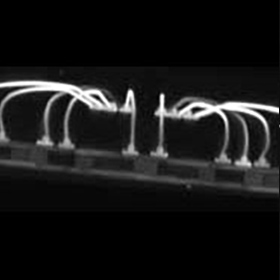News
X-ray Micro CT: Using sCMOS Cameras in Tomography
12th Jan, 2021
X-ray computed microtomography allows the rendering of a virtual 3D model of an object with spatial resolutions in the micrometre regime. To achieve high resolution reconstruction, the characteristics of the X-Ray detector plays an important role. Besides other parameters, the size of the detector pixels determines which resolution is accessible with a certain X-ray micro CT system. The absolute number of pixels and therefore the size of a detector is also a relevant value that customers take into account for potential applications of sCMOS cameras in microtomography.
Photonics Science has developed sCMOS cameras that are particularly suitable for X-ray microtomography.
Fast Technology with Low Read Out Noise
Before the introduction of sCMOS cameras, CCD and EMCCD were the preferred technologies available for advanced digital imaging. Today, sCMOS provides many advantages over CCD technology.
Overall, sCMOS cameras combine low noise, high speed, and a large field of view. Applications can benefit from Photonics Sciences’ X-ray sCMOS cameras, allowing a real time acquisition routine and offering a shutterless acquisition technique with smear free exposures down to the millisecond range. Beyond that, the simultaneous exposure and read out due to a 100% duty cycle detector technology considerably reduces the scanning time down to 50%.
Clearly, scanning time is an essential factor in computed tomography, based on the fact that the 3D render of an object requires up to a few 1000s of radiographs. These graphs are taken while the object is scanned at different detection angles due to a rotational movement of the detector relative to the object. To process the large amount of recorded date from the sCMOS camera, remote acquisition through existing GUI interfaces is possible through a device server driver control.
X-Ray Micro CT Offers New Opportunities
Besides scientific areas such as physics, applications for X-ray microtomography include medical imaging as well as industrial computed tomography. For example, high resolution X-ray images provide physicians new insight into tissue structures for treating diseases, or engineers gain a non-destructive view into objects at high resolution for the analysis of ore, mineral, metal, wood or polymer composite materials—to name a few. Even reverse engineering is supported by X-ray microtomography through revealing the design or architecture of a non-transparent object.
The wide spectral range of X-ray radiation that is detected by sCMOS cameras qualifies this type of camera for many applications. Soft X-rays are commonly detected directly on the sCMOS camera chip while hard X-rays require a scintillator that converts X-ray radiation into visible light that is detected by the sCMOS camera chip.
sCMOS Cameras: Resolution is Your Choice
Photonics Science offers three X-Ray sCMOS cameras that are recommended for microtomography. The detectors comprise 4 megapixel, 16 megapixel and 37.7 megapixel versions which will be deposited with custom scintillator for detection of hard X-rays above 1 keV. Direct detection versions are applicable for lower energy X-rays.
If you would like to learn more about our sCMOS cameras for X-ray micro- and nanotomography from Photonics Science, or, if you have any questions, why not contact a member of the team today?




